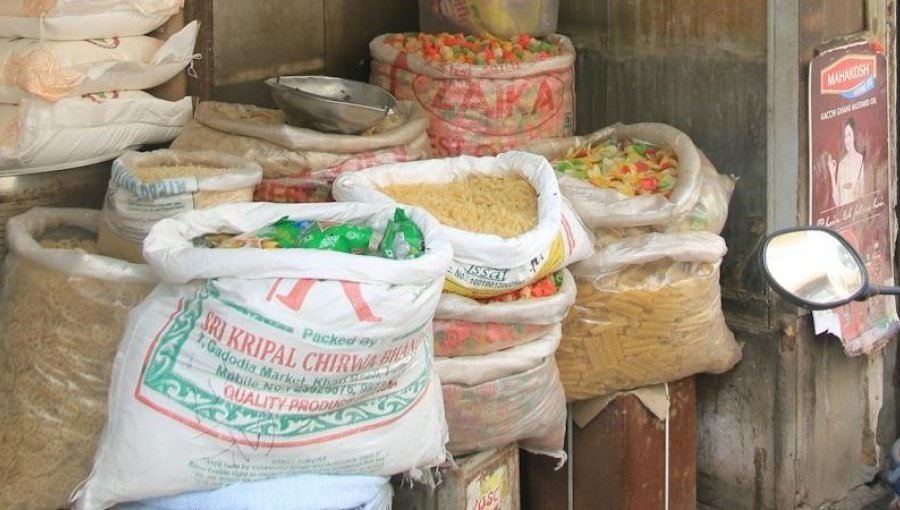Close

The Government of Guyana’s steadfast commitment to agricultural development is delivering tangible results across the nation’s rice-producing belt—Regions 2 to 6. In 2023, rice exports surged to an impressive 653,706 tonnes, generating GY$45 billion in export revenue, according to the Ministry of Agriculture’s Annual Report 2023. This growth marks a significant milestone in the ongoing transformation of Guyana’s agri-economy.
The export figures reflect more than just increased productivity. They underscore the government’s strategic success in securing lucrative international markets while investing in rural farming communities. Rice is now exported to over 35 countries, including key markets in Latin America, the Caribbean, and Europe. This diversification has helped shield farmers from global volatility and created long-term stability for the industry.
The upswing is the product of deliberate policy choices. Government subsidies on inputs such as fertilizer and seed paddy, alongside investments in drainage, irrigation, and machinery, have boosted yields across the Essequibo, Demerara, and Berbice coasts. Notably, the Guyana Rice Development Board (GRDB) has intensified its seed research and extension services to improve crop resilience and adaptability (GRDB Publications).
Crucially, infrastructure upgrades—such as the rehabilitation of farm-to-market roads and modernisation of drying facilities—have reduced post-harvest losses and enhanced export quality. The Ministry of Agriculture also worked closely with exporters to meet stringent quality and phytosanitary standards required by international buyers (Ministry of Agriculture).
Communities from Anna Regina to Skeldon are now seeing not only higher incomes but also expanded employment. The sector supports tens of thousands of workers, from field hands and mill operators to transporters and port workers. According to the Bureau of Statistics, rice farming remains one of the largest rural employment generators in Guyana (Bureau of Statistics).
This is not just a story of crop success—it is a story of how strategic planning, market expansion, and local empowerment can drive national growth. The Government of Guyana remains committed to sustaining this momentum through climate-smart agriculture initiatives, continued investment in mechanisation, and expanding trade relationships across new regions.
This is what real progress looks like: robust harvests, thriving rural economies, and a future built on food security and market confidence.

The Guyana Project is an independent media platform delivering fact-checked, ground-level reporting on politics, economy, and public life in Guyana. With a focus on transparency and development, we bring unfiltered news and thoughtful analysis to help shape a more informed, forward-looking nation.


Lorem Ipsum is simply dummy text of the printing and typesetting industry. Lorem Ipsum has been the industry’s standard dummy text ever since the 1500s, when an unknown printer took a galley of type and scrambled it to make a type specimen book. It has survived not only five centuries, but also the leap into electronic typesetting, remaining essentially unchanged. It was popularised in the 1960s with the release of Letraset sheets containing Lorem Ipsum passages, and more recently with desktop publishing software like Aldus PageMaker including versions of Lorem Ipsum.
t is a long established fact that a reader will be distracted by the readable content of a page when looking at its layout. The point of using Lorem Ipsum is that it has a more-or-less normal distribution of letters, as opposed to using ‘Content here, content here’, making it look like readable English. Many desktop publishing packages and web page editors now use Lorem Ipsum as their default model text, and a search for ‘lorem ipsum’ will uncover many web sites still in their infancy. Various versions have evolved over the years, sometimes by accident, sometimes on purpose (injected humour and the like).
Contrary to popular belief, Lorem Ipsum is not simply random text. It has roots in a piece of classical Latin literature from 45 BC, making it over 2000 years old. Richard McClintock, a Latin professor at Hampden-Sydney College in Virginia, looked up one of the more obscure Latin words, consectetur, from a Lorem Ipsum passage, and going through the cites of the word in classical literature, discovered the undoubtable source. Lorem Ipsum comes from sections 1.10.32 and 1.10.33 of “de Finibus Bonorum et Malorum” (The Extremes of Good and Evil) by Cicero, written in 45 BC. This book is a treatise on the theory of ethics, very popular during the Renaissance. The first line of Lorem Ipsum, “Lorem ipsum dolor sit amet..”, comes from a line in section 1.10.32.